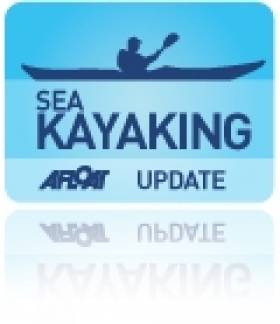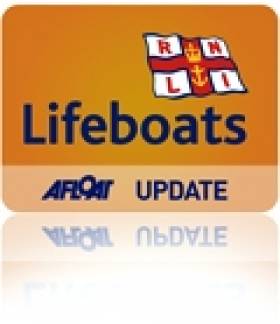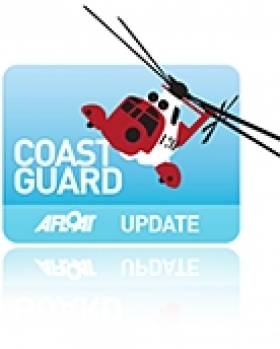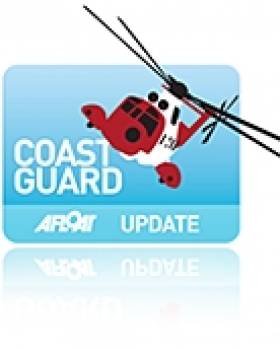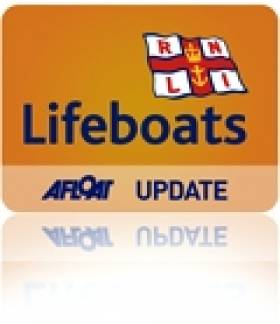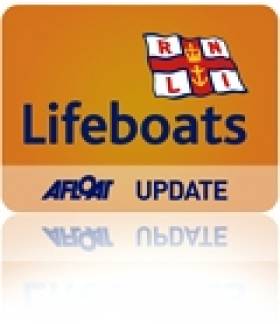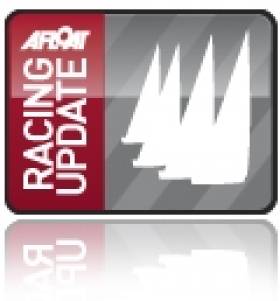Displaying items by tag: Bangor
Sea Kayak Race on Bangor Bay Announced by Ballyholme Yacht Club
#kayak – Bangor town is steeped in maritime history and the local yacht club at Ballyholme Yacht Club hope this 'invasion' of kayaks will add a bit of colour to the annual festivities.
What's it all About?
Come along and have some fun. The race is planned to be a challenging and fun event for everyone. Sea kayaks, sit on tops and river kayaks are all welcome.
The Race
Will take place on the coastline between Bangor and Groomsport, starting and finishing at Ballyholme Yacht Club.
Classes & Prizes
Boats will be classed according to their overall hull length so large or small, there's a chance of winning. There'll be prizes for juniors and adults and it's hoped everyone will go away with something (even if it's just a warm glow!).
The Fun Side
Whilst we hope the race is competitive, we'd like to have a light hearted and fun day and so there'll also be prizes for the best dressed 'Pirate' paddlers in the race. So bring your bandanas, eye patches and jolly rodgers for a bit of craic.
Plan for the day
Registration will be at 12.30pm, followed by the race and then a BBQ & drinks at Ballyholme Yacht Club. More details are given when you sign up or have a look at the Course section on this site.
What do I need to do?
Sign up and pay the entry fee, enjoy the day and have a bit of craic! Read the race rules and click on the Enter Now link above or below.
Supporting the RNLI
The Bangor Bay Sea Kayak Race will raise funds for the RNLI and we would encourage paddlers to donate to the charity either on the day or through the donation facility on the booking form. You'd like them to be there when you need them so please give generously!
Costs
The entry fee is only £25 per kayak and includes a T-Shirt and the BBQ after the race.
Contact
All entrants will receive an email confirmation with a link to further details but if you have any questions about the race please email [email protected]
Busy Days For RNLI Lifeboats In Co Down
#RNLI - Newcastle RNLI’s always-on-call lifeboat crew had to abandon their buckets and sponges during a fundraising car wash at the weekend to respond to an emergency at the Co Down town’s harbour.
The RNLI volunteers were busily soaping and rinsing cars for their annual Easter fundraiser on Saturday when they were alerted to a woman in trouble in the freezing water a few yards from one of the piers.
The car wash was immediately abandoned and within minutes the inshore lifeboat Aldergrove II was launched and rushed to the woman’s aid.
At the same time, crew member Shane Rice grabbed a lifebelt from the pier and jumped into the water to assist the woman. He kept her afloat while the Aldergrove II came alongside.
The woman was helped into the rescue inflatable, wrapped in blankets to prevent hypothermia, and taken back to shore where an ambulance was waiting to take her to hospital.
Newcastle RNLI’s deputy launching authority Clifford Moorehead said afterwards: "The lifeboat crew are always ready to respond in an instant to any emergency. It is fortunate that the car wash was in progress at the time and the crew members were on hand to swiftly deal with this case.
"After the rescue the crew members came back to the harbour and resumed their car wash. It’s just all in a day’s work for the RNLI."
It wasn't the only callout of the weekend for the RNLI in Co Down, as Bangor RNLI assisted a lone sailor who got into difficulty on a sailing dinghy Easter Sunday.
At 1.10pm the volunteer lifeboat crew received an urgent request from Belfast Coastguard to launch the lifeboat and rescue one person from a 17ft dinghy.
The sailing dinghy had reportedly gone aground on ‘Cockle Island’ off Groomsport Harbour on the southern shores of Belfast Lough.
Upon arrival at the scene, the volunteer crew found that the occupant onboard the dinghy had been assisted by another boat owner and the vessel had been safely tied to a mooring buoy.
Meanwhile, last Wednesday evening Portaferry RNLI was launched to reports that red flares has been sighted on Strangford Lough off Kircubbin in Co Down.
They were joined by a coastguard team that searched the shoreline and after some time recovered a spent flare casing. The inshore lifeboat and its volunteer crew were stood down after a number of hours with the callout proving to be a false alarm.
Portaferry RNLI lifeboat operations manager Brian Bailie said: "A member of the public acted in good faith ... alerting the emergency services to what they understood to be a distress flare on the lough."
He reiterated that flares "should only be used in emergency situations".
Belfast Coastguard Manager Resigns As Station Takes On Extra Load
#Coastguard - For Argyll in Scotland reports that Richard Newell has resigned from his post as rescue co-ordination centre manager at Belfast Coastguard.
The news comes some weeks after the command base took on extra responsibility with the permanent closure of the Clyde coastguard station last month.
Britain's Maritime and Coastguard Agency (MCA) confirmed to the website that Newell resigned from his position around two weeks ago - and that he has assured the agency that his decision has no connection with the streamlining plans being undertaken across Britain's coastguard network.
However, For Argyll alleges Newell had made it known locally that "if he considered the future [of the coastguard service] was becoming dangerous, then he would go".
As previously reported on Afloat.ie, campaigners for the Clyde coastguard station in western Scotland were taken aback by the early transfer of helicopter dispatches to Belfast and Stornoway in November, ahead of the base's permanent closure on 18 December last.
More than 30 jobs were lost with the scrapping of the Clyde control centre at Greenock, with much of its role now being taken up by the Belfast command centre at Bangor across the North Channel - a change to the original plan for Scottish stations to share the load till 2015.
RNLI Answers More Than 400 Calls in NI in 2012
#RNLI - Lifeboats in Northern Ireland launched 255 times to a variety of call-outs in 2012 in a year that saw the institution's lifeboats and lifeguards answer 413 calls for help.
RNLI search and rescue operations saw 236 people brought safely to shore throughout the year by the nine volunteer lifeboat crews located across the region.
The annual statistics released by the charity today (22 January) show that of the figures, 111 services took place in darkness while crews collectively spent 2,193 service hours at sea.
Bangor was the busiest lifeboat station in Northern Ireland last year, launching to 53 requests for help with the crew rescuing 53 people off the Co Down coast.
Enniskillen, which operates two bases on Upper and Lower Lough Erne in Co Fermanagh and which is the North’s only inland RNLI station, launched 46 times and brought 50 people to safety.
Meanwhile, Portrush RNLI in Co Antrim launched 33 times and rescued 33 people.
It was also a busy year for the 10 RNLI lifeguard units located on beaches in Co Down and along the Causeway Coast, where lifeguards responded to 158 incidents and assisted 176 people who found themselves in difficulty.
The Causeway Coast, where there are seven units located, was the busiest area, with Portrush East lifeguards responding to 31 incidents and assisting 35 people. The Benone unit attended 30 incidents and assisted 30 people while the Portrush West unit responded to 25 incidents and assisted 32 people.
Overall in Ireland, RNLI lifeboats launched 939 times with the volunteer crews across the 44 stations rescuing 1,041 people. Dun Laoghaire was the busiest lifeboat station in the Republic in 2012, responding to 46 call-outs throughout the year and rescuing 76 people.
Commenting on the 2012 statistics for Northern Ireland, RNLI operations manager Martyn Smith said: "The RNLI lifeguard service has expanded to 10 beaches in Northern Ireland and with the support of the local authorities they have an active and welcome presence on many beaches.
"They do not just saves lives and assist those in trouble in the sea, but also provide information, advice and first aid when needed, ensuring many potential incidents are prevented.
"I would like to say a huge thank-you to all those who support the RNLI, a charity dependent on the generosity of the public, whether by giving up their time or by making a donation."
'Early Closure' of Clyde Coastguard Surprises Campaigners
#COASTGUARD - Campaigners for the Clyde coastguard station in western Scotland have suffered a blow with the news that all calls are now being routed to Stornoway and Belfast as of last night.
BBC News reports on a document leaked to the Coastguard SOS Campaign, which outlines that while the Clyde station itself is scheduled to close on 18 December, control of aerials (ie helicopter dispatches) to the stations at Stornoway and Belfast was on schedule to be completed by yesterday evening (Friday 16 November).
Campaigner Dennis O'Connor said this move meant that "Clyde will cease to exist operationally" from last night.
He also described it as a "direct challenge" to concerns from the Transport Select Committee in Westminster that the closure programme had started early with the closure of Forth coastguard in September "despite assurances that the replacement system of operation would be fully tested before any closures took place".
However, a spokesperson for the Maritime and Coastguard Agency said that the handover period "has been planned for some time. All the staff have been informed well in advance."
As previously reported on Afloat.ie, the scrapping of the Clyde control centre at Greenock will see the loss of 31 jobs, with much of its role being taken up by the Belfast coastguard at Bangor across the North Channel - a change to the original plan for Scottish stations to share the load till 2015.
#rnli – At lunchtime today Bangor lifeboat crew received a urgent request from Belfast Coastguard to launch the lifeboat and rescue 3 people onboard a 15ft speed boat. The dory type vessel had experience 'catastrophic' engine failure close to Black Head which is on northern shores of Belfast Lough.
Within minutes of the rescue pagers being activated, volunteer crews had launched and Bangor Lifeboat and were proceeding at full speed towards the stricken vessel.
Upon arrival volunteer crew found that the dory had beached on rocks beneath the Lighthouse and the 3 occupants had scrambled safely ashore. A very lucky escape for those onboard.
With weather conditions deteriorating lifeboat crew were able to get a tow line aboard the grounded dory and tow it to the safety of Whitehead Harbour.
When leaving Whitehead Harbour to return to Bangor, lifeboat crew noticed that another 15ft speed boat with 4 people onboard was in difficulty and needing assistance.
A tow line was quickly rigged and she was then taken under tow to the safety of Whitehead Harbour.
RNLI volunteer helmsman Ewan Scott used these rescues to highlight a RNLI safety message when he said. We always urge everyone going afloat to make sure their engine and fuel systems and are well maintained and in good working order. Engine failure close to shore and commercial shipping routes could lead to a life threatening situation'. He added 'We're happy that everyone onboard both vessels are now safely ashore'.
Stranded Canoeist Rescued By Bangor Lifeboat
#RNLI – On Sunday afternoon, Bangor lifeboat received a request from Belfast Coastguard to launch and rescue a canoeist who was in difficulty off Groomsport.
Relatively calm sea conditions allowed for the Lifeboat to proceed at full speed to the scene which was close to the entrance of Groomsport Harbour
Upon arrival, lifeboat crew spotted a young man standing on an isolated outcrop of rocks with his canoeing companion paddling close by. With tides rising, the young man was plucked to safety by Lifeboat crew.
The young man was taken to the safety of Groomsport Harbour where he was attended to by paramedics.
RNLI volunteer crew man Tim Lee who was involved in this rescue took the opportunity to stress four very important sea safety tips for canoeist going afloat this summer.. He said. 'Always wear a lifejacket, secondly tell others where you are going, thirdly carry some means of calling for help and finally always check the weather and tides' He added 'We are glad that this young man is now safely ashore'.
Bangor Couple Join Jubilee Flotilla After Epic Journey
#JUBILEE FLOTILLA - A couple from Bangor in Co Down will cruise their boat among the hundreds of vessels packed in the River Thames today for the Queen's Diamond Jubilee flotilla.
As BBC News reports, Robin and Evelyn Clark believe they are the only couple from Bangor who will be cruising in the British capital along with more than 1,000 other boats of all shapes and sizes.
But they will be joined by friends and family as they motor along the Thames from Putney in Southwest London to Tower Bridge.
It will mark the end of an epic adventure from the couple, who cruised all the way from Lough Neagh via Belfast and Portrush, across the Irish Sea by way of the Isle of Man, along the coast of Wales and around Land's End to the South Coast of England.
Speaking of memorable sights along their journey, Robin Clark said: "The wildlife, the seals, porpoises off the coast of the Northern Ireland coast and the dolphins have to be the highlight."
The Clarks will have something else to remember later today, as the flotilla pageant promises a carnival atmosphere not seen in London for decades.
BBC News has more on the story HERE.
Two Rescues by RNLI Bangor Lifeboat
#RNLI – Within the past seven days crew from RNLI Bangor Lifeboat have launched twice to assist crews aboard two stricken vessels.
On Thursday 3rd May at 10.40pm Belfast Coastguard received information from a concerned member of the public that a red flare had been observed north of Groomsport. Volunteer crew quickly assembled and launched RNLI Bangor Lifeboat which proceeded at full speed to the Groomsport area. A search pattern was quickly established, thankfully nothing was found. It was reported that a number of unused sky lanterns had been found and it's believed that one of these lanterns could have raised the alarm. While completing the search crew onboard Bangor Lifeboat received a radio call from Belfast Coastguard. A 35ft commercial fishing vessel with 2 people onboard had experienced engine failure 1½ mile south of Blackhead Lighthouse. Relatively calm sea conditions allowed Bangor Lifeboat to proceed at full speed to the stricken vessel. Volunteer lifeboat crew rigged a tow line and towed the fishing boat to the safety of Bangor Harbour.
On Monday 7th May at 11.30am volunteer RNLI crew were alerted by rescue pager that a 29ft yacht with 1 person onboard had difficulty in 'making way' and required assistance. Belfast Coastguard gave the vessels location as 1 nautical miles north of Helens Bay. Bangor Lifeboat was launched and proceeded at full speed to the stricken vessel. Volunteer lifeboat crew rigged a tow line and towed the yacht to the safety of Bangor Marina
Peter Scott, RNLI volunteer helmsman at Bangor Lifeboat Station took this opportunity to stress five very important sea safety tips for anyone going afloat. He said. 'Always wear a lifejacket, secondly check your engine and fuel, thirdly tell others where you are going, fourthly carry some means of calling for help and finally always check the weather and tides' He added 'We're happy that the crews aboard both vessels are now safely ashore'.
Ailsa Craig Race Celebrates 50th Anniversary
#RACING UPDATE - This summer the Royal Ulster Yacht Club will stage the 50th anniversary edition of the Ailsa Craig Race, one of the classics of the Northern Ireland offshore yacht racing calendar.
Many of the competitors from the inaugural race in 1962 - several of whom are now in their 80s - are expected to compete in the overnight challenge, which takes the fleet from Bangor to the rock at the mouth of the Clyde in Scotland.
The 2012 Ailsa Craig Race, sponsored by Hamilton Shipping, takes place on 15 June.


























